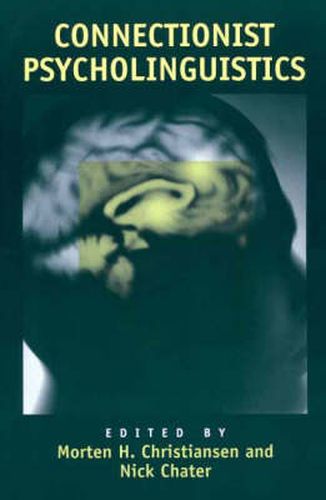Readings Newsletter
Become a Readings Member to make your shopping experience even easier.
Sign in or sign up for free!
You’re not far away from qualifying for FREE standard shipping within Australia
You’ve qualified for FREE standard shipping within Australia
The cart is loading…






Setting forth the state of the art, leading researchers present a survey on the fast-developing field of Connectionist Psycholinguistics: using connectionist or neural networks, which are inspired by brain architecture, to model empirical data on human language processing. Connectionist psycholinguistics has already had a substantial impact on the study of a wide range of aspects of language processing, ranging from inflectional morphology, to word recognition, to parsing and language production.
Christiansen and Chater begin with an extended tutorial overview of Connectionist Psycholinguistics which is followed by the latest research by leading figures in each area of research. The book also focuses on the implications and prospects for connectionist models of language, not just for psycholinguistics, but also for computational and linguistic perspectives on natural language. The interdisciplinary approach will be relevant for, and accessible to psychologists, cognitive scientists, linguists, philosophers, and researchers in artificial intelligence.
$9.00 standard shipping within Australia
FREE standard shipping within Australia for orders over $100.00
Express & International shipping calculated at checkout
Setting forth the state of the art, leading researchers present a survey on the fast-developing field of Connectionist Psycholinguistics: using connectionist or neural networks, which are inspired by brain architecture, to model empirical data on human language processing. Connectionist psycholinguistics has already had a substantial impact on the study of a wide range of aspects of language processing, ranging from inflectional morphology, to word recognition, to parsing and language production.
Christiansen and Chater begin with an extended tutorial overview of Connectionist Psycholinguistics which is followed by the latest research by leading figures in each area of research. The book also focuses on the implications and prospects for connectionist models of language, not just for psycholinguistics, but also for computational and linguistic perspectives on natural language. The interdisciplinary approach will be relevant for, and accessible to psychologists, cognitive scientists, linguists, philosophers, and researchers in artificial intelligence.